1. Petersmann A, Müller-Wieland D, Müller UA, Landgraf R, Nauck M, Freckmann G, Heinemann L, Schleicher E. 2019; Definition, classification and diagnosis of diabetes mellitus. Exp Clin Endocrinol Diabetes. 127:S1–S7. DOI:
10.1055/a-1018-9078. PMID:
31860923.

3. Zheng Y, Ley SH, Hu FB. 2018; Global aetiology and epidemiology of type 2 diabetes mellitus and its complications. Nat Rev Endocrinol. 14:88–98. DOI:
10.1038/nrendo.2017.151. PMID:
29219149.

6. Huang X, Liang P, Jiang B, Zhang P, Yu W, Duan M, Guo L, Cui X, Huang M, Huang X. 2020; Hyperbaric oxygen potentiates diabetic wound healing by promoting fibroblast cell proliferation and endothelial cell angiogenesis. Life Sci. 259:118246. DOI:
10.1016/j.lfs.2020.118246. PMID:
32791151.

7. Boniakowski AE, Kimball AS, Jacobs BN, Kunkel SL, Gallagher KA. 2017; Macrophage-mediated inflammation in normal and diabetic wound healing. J Immunol. 199:17–24. DOI:
10.4049/jimmunol.1700223. PMID:
28630109.

8. Shapouri-Moghaddam A, Mohammadian S, Vazini H, Taghadosi M, Esmaeili SA, Mardani F, Seifi B, Mohammadi A, Afshari JT, Sahebkar A. 2018; Macrophage plasticity, polarization, and function in health and disease. . J Cell Physiol. 233:6425–6440. DOI:
10.1002/jcp.26429. PMID:
29319160.

11. Huang YY, Lin CW, Cheng NC, Cazzell SM, Chen HH, Huang KF, Tung KY, Huang HL, Lin PY, Perng CK, Shi B, Liu C, Ma Y, Cao Y, Li Y, Xue Y, Yan L, Li Q, Ning G, Chang SC. 2021; Effect of a novel macrophage-regulating drug on wound healing in patients with diabetic foot ulcers: a randomized clinical trial. JAMA Netw Open. 4:e2122607. DOI:
10.1001/jamanetworkopen.2021.22607. PMID:
34477854. PMCID:
PMC8417758.
12. Louiselle AE, Niemiec SM, Zgheib C, Liechty KW. 2021; Macrophage polarization and diabetic wound healing. Transl Res. 236:109–116. DOI:
10.1016/j.trsl.2021.05.006. PMID:
34089902.

13. Yang H, Song L, Sun B, Chu D, Yang L, Li M, Li H, Dai Y, Yu Z, Guo J. 2021; Modulation of macrophages by a paeoniflorin-loaded hyaluronic acid-based hydrogel promotes diabetic wound healing. Mater Today Bio. 12:100139. DOI:
10.1016/j.mtbio.2021.100139. PMID:
34632363. PMCID:
PMC8488309.

16. Mei L, He M, Zhang C, Miao J, Wen Q, Liu X, Xu Q, Ye S, Ye P, Huang H, Lin J, Zhou X, Zhao K, Chen D, Zhou J, Li C, Li H. 2019; Paeonol attenuates inflammation by targeting HMGB1 through upregulating miR-339-5p. Sci Rep. 9:19370. DOI:
10.1038/s41598-019-55980-4. PMID:
31852965. PMCID:
PMC6920373.

17. Miao J, Zhong J, Lan J, Ye S, Ye P, Li S, You A, Chen X, Liu X, Li H. 2021; Paeonol attenuates inflammation by confining HMGB1 to the nucleus. J Cell Mol Med. 25:2885–2899. DOI:
10.1111/jcmm.16319. PMID:
33534963. PMCID:
PMC7957162.

18. Wang R, Lechtenberg M, Sendker J, Petereit F, Deters A, Hensel A. 2013; Wound-healing plants from TCM: in vitro investigations on selected TCM plants and their influence on human dermal fibroblasts and keratinocytes. Fitoterapia. 84:308–317. DOI:
10.1016/j.fitote.2012.12.020. PMID:
23266731.

19. Sun L, Li J, Gao W, Shi M, Tang F, Fu X, Chen X. 2021; Coaxial nanofibrous scaffolds mimicking the extracellular matrix transition in the wound healing process promoting skin regeneration through enhancing immunomodulation. . J Mater Chem B. 9:1395–1405. DOI:
10.1039/D0TB01933J. PMID:
33462572.

20. Yang J, Chen Z, Pan D, Li H, Shen J. 2020; Umbilical cord-derived mesenchymal stem cell-derived exosomes combined Pluronic F127 hydrogel promote chronic diabetic wound healing and complete skin regeneration. Int J Nanomedicine. 15:5911–5926. DOI:
10.2147/IJN.S249129. PMID:
32848396. PMCID:
PMC7429232.
21. Liu J, Feng L, Ma D, Zhang M, Gu J, Wang S, Fu Q, Song Y, Lan Z, Qu R, Ma S. 2013; Neuroprotective effect of paeonol on cognition deficits of diabetic encephalopathy in streptozotocin-induced diabetic rat. Neurosci Lett. 549:63–68. DOI:
10.1016/j.neulet.2013.06.002. PMID:
23791853.

22. Abu-Al-Basal MA. 2010; Healing potential of Rosmarinus officinalis L. on full-thickness excision cutaneous wounds in alloxan-induced-diabetic BALB/c mice. J Ethnopharmacol. 131:443–450. DOI:
10.1016/j.jep.2010.07.007. PMID:
20633625.

23. Hsieh CF, Liu CK, Lee CT, Yu LE, Wang JY. 2019; Acute glucose fluctuation impacts microglial activity, leading to inflammatory activation or self-degradation. Sci Rep. 9:840. DOI:
10.1038/s41598-018-37215-0. PMID:
30696869. PMCID:
PMC6351546.

24. Ma T, Huang X, Zheng H, Huang G, Li W, Liu X, Liang J, Cao Y, Hu Y, Huang Y. 2021; SFRP2 improves mitochondrial dynamics and mitochondrial biogenesis, oxidative stress, and apoptosis in diabetic cardiomyopathy. Oxid Med Cell Longev. 2021:9265016. DOI:
10.1155/2021/9265016. PMID:
34790288. PMCID:
PMC8592716.

25. M de-Brito N, Duncan-Moretti J, C da-Costa H, Saldanha-Gama R, Paula-Neto HA, G Dorighello G, L Simões R, Barja-Fidalgo C. 2020; Aerobic glycolysis is a metabolic requirement to maintain the M2-like polarization of tumor-associated macrophages. Biochim Biophys Acta Mol Cell Res. 1867:118604. DOI:
10.1016/j.bbamcr.2019.118604. PMID:
31760090.
26. Tang H, Li K, Zhang S, Lan H, Liang L, Huang C, Li T. 2021; Inhibitory effect of paeonol on apoptosis, oxidative stress, and inflammatory response in human umbilical vein endothelial cells induced by high glucose and palmitic acid induced through regulating SIRT1/FOXO3a/NF-κB pathway. J Interferon Cytokine Res. 41:111–124. DOI:
10.1089/jir.2019.0236. PMID:
33750217.

27. Patel S, ivastava S Sr, Singh MR, Singh D. 2019; Mechanistic insight into diabetic wounds: pathogenesis, molecular targets and treatment strategies to pace wound healing. Biomed Pharmacother. 112:108615. DOI:
10.1016/j.biopha.2019.108615. PMID:
30784919.

28. Davis FM, Kimball A, Boniakowski A, Gallagher K. 2018; Dysfunctional wound healing in diabetic foot ulcers: new crossroads. Curr Diab Rep. 18:2. DOI:
10.1007/s11892-018-0970-z. PMID:
29362914.

30. Yu T, Gao M, Yang P, Liu D, Wang D, Song F, Zhang X, Liu Y. 2019; Insulin promotes macrophage phenotype transition through PI3K/Akt and PPAR-γ signaling during diabetic wound healing. J Cell Physiol. 234:4217–4231. DOI:
10.1002/jcp.27185. PMID:
30132863.

31. Hao Y, Yang L, Liu Y, Ye Y, Wang J, Yu C, Yan H, Xing Y, Jia Z, Hu C, Zuo H, Li Y. 2021; mmu-miR-145a-5p accelerates diabetic wound healing by promoting macrophage polarization toward the M2 phenotype. Front Med (Lausanne). 8:775523. DOI:
10.3389/fmed.2021.775523. PMID:
34993211. PMCID:
PMC8724056. PMID:
2cc16beeb0cc4c91a9c437642fe4de58.

32. Li S, Ding X, Zhang H, Ding Y, Tan Q. 2022; IL-25 improves diabetic wound healing through stimulating M2 macrophage polarization and fibroblast activation. Int Immunopharmacol. 106:108605. DOI:
10.1016/j.intimp.2022.108605. PMID:
35149293.

33. Yang Y, Zhang B, Yang Y, Peng B, Ye R. 2022; FOXM1 accelerates wound healing in diabetic foot ulcer by inducing M2 macrophage polarization through a mechanism involving SEMA3C/NRP2/Hedgehog signaling. Diabetes Res Clin Pract. 184:109121. DOI:
10.1016/j.diabres.2021.109121. PMID:
34742786.

35. Liu C, Han Y, Gu X, Li M, Du Y, Feng N, Li J, Zhang S, Maslov LN, Wang G, Pei J, Fu F, Ding M. 2021; Paeonol promotes Opa1-mediated mitochondrial fusion via activating the CK2α-Stat3 pathway in diabetic cardiomyopathy. Redox Biol. 46:102098. DOI:
10.1016/j.redox.2021.102098. PMID:
34418601. PMCID:
PMC8385203.
37. Adki KM, Kulkarni YA. 2021; Neuroprotective effect of paeonol in streptozotocin-induced diabetes in rats. Life Sci. 271:119202. DOI:
10.1016/j.lfs.2021.119202. PMID:
33577853.

38. Chen G, Guo T, Yang L. 2022; Paeonol reduces IL-β production by inhibiting the activation of nucleotide oligomerization domain-like receptor protein-3 inflammasome and nuclear factor-κB in macrophages. Biochem Cell Biol. 100:28–36. DOI:
10.1139/bcb-2021-0255. PMID:
34784237.

39. Yuan C, Xu X, Wang N, Zhu Q, Zhang J, Gong W, Ding Y, Xiao W, Chen W, Lu G, Yao G, Pan J, Wu K. 2022; Paeonol protects against acute pancreatitis by inhibiting M1 macrophage polarization via the NLRP3 inflammasomes pathway. Biochem Biophys Res Commun. 600:35–43. DOI:
10.1016/j.bbrc.2022.02.019. PMID:
35182973.

41. Liu D, Yang P, Gao M, Yu T, Shi Y, Zhang M, Yao M, Liu Y, Zhang X. 2019; NLRP3 activation induced by neutrophil extracellular traps sustains inflammatory response in the diabetic wound. Clin Sci (Lond). 133:565–582. DOI:
10.1042/CS20180600. PMID:
30626731.

42. Qing L, Fu J, Wu P, Zhou Z, Yu F, Tang J. 2019; Metformin induces the M2 macrophage polarization to accelerate the wound healing via regulating AMPK/mTOR/NLRP3 inflammasome singling pathway. Am J Transl Res. 11:655–668. PMID:
30899369. PMCID:
PMC6413292.

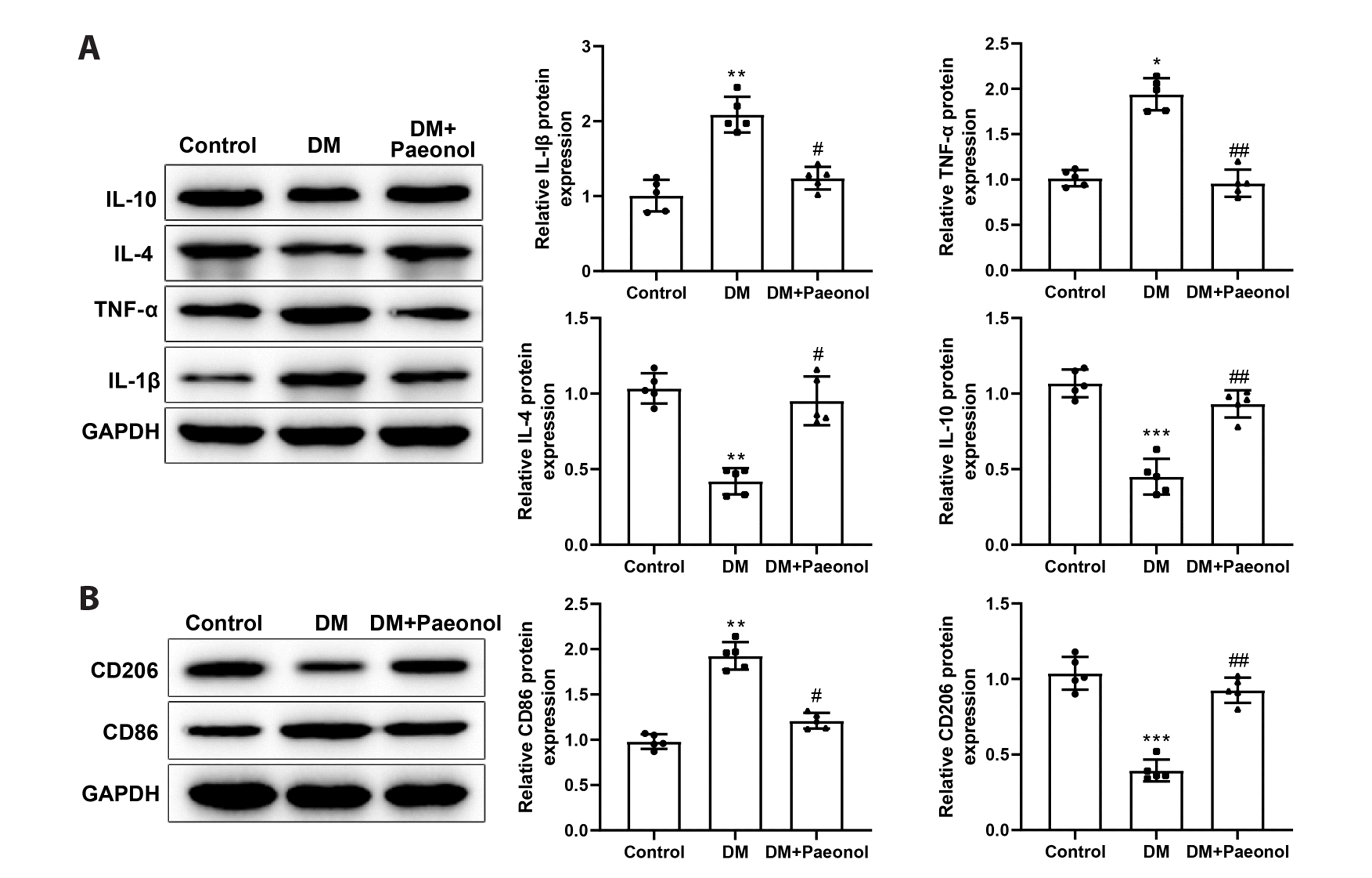
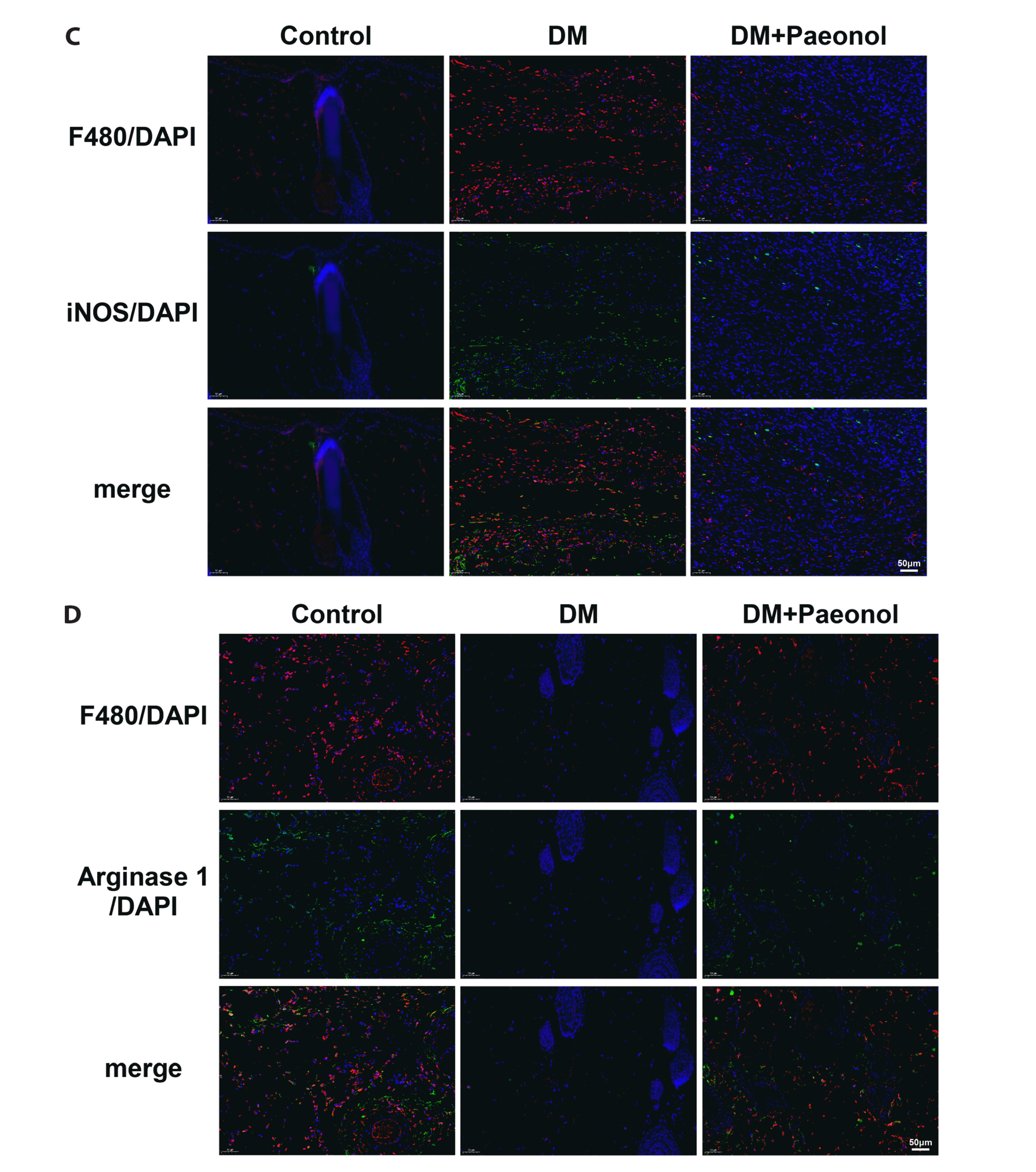
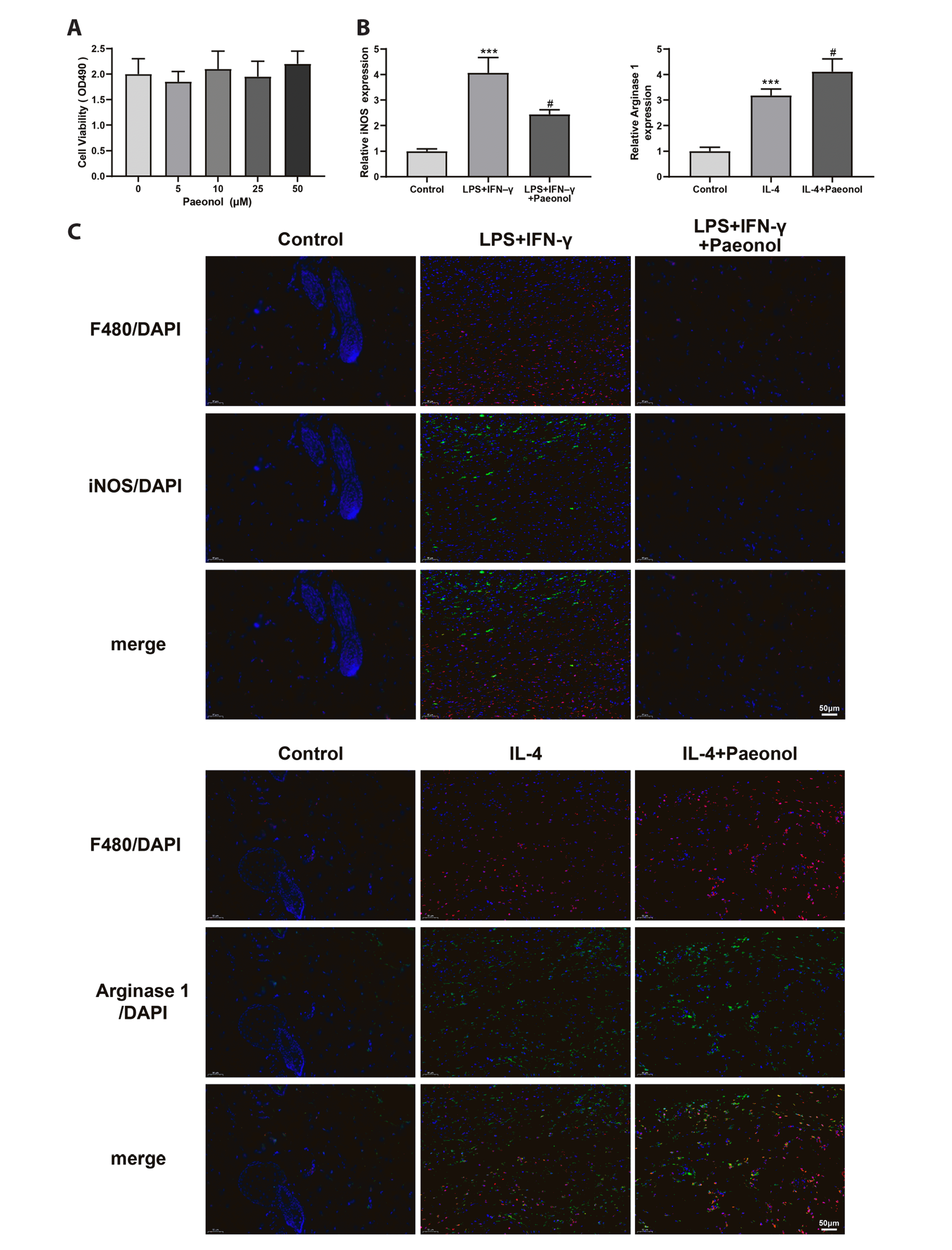
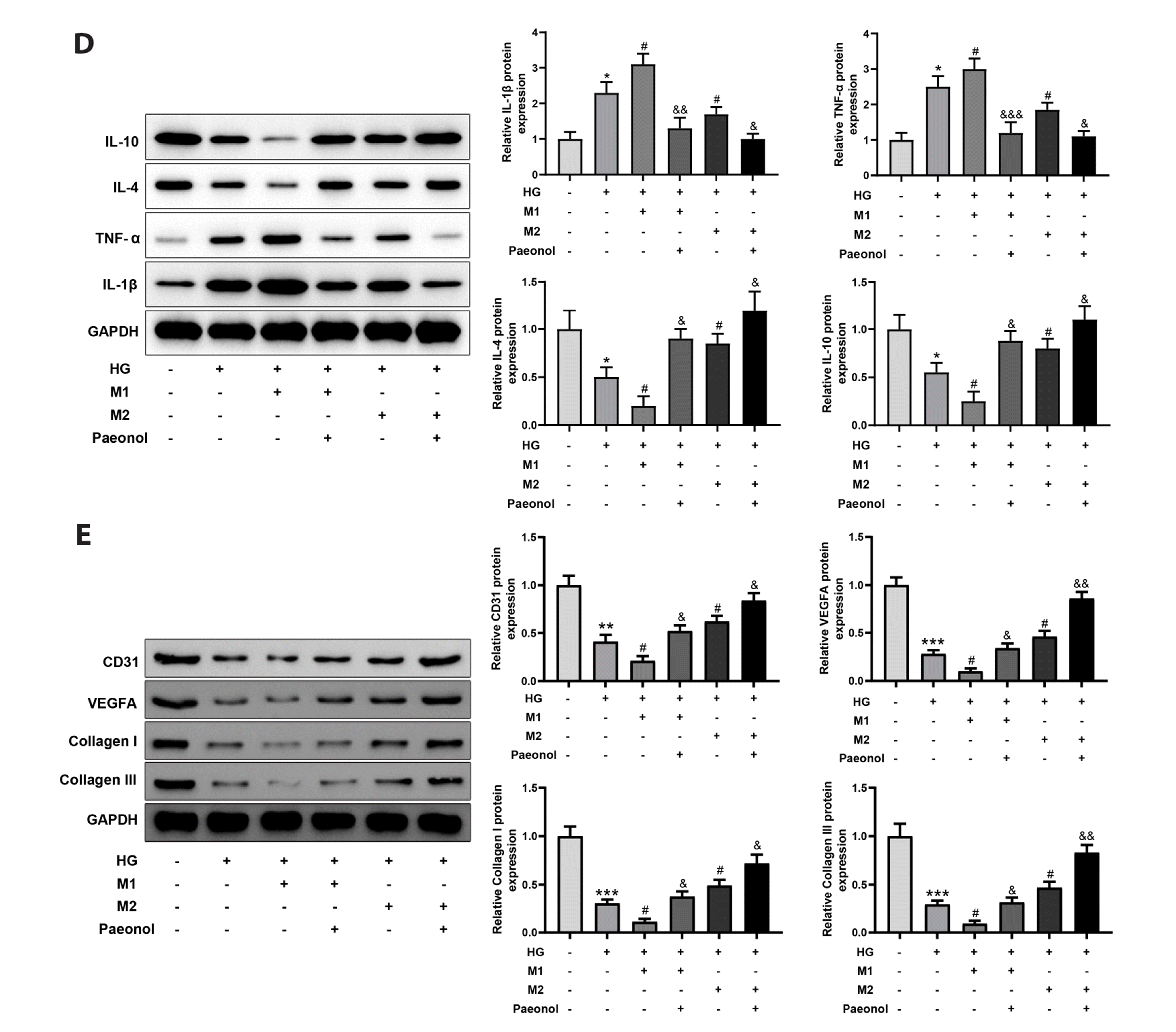




 PDF
PDF Citation
Citation Print
Print


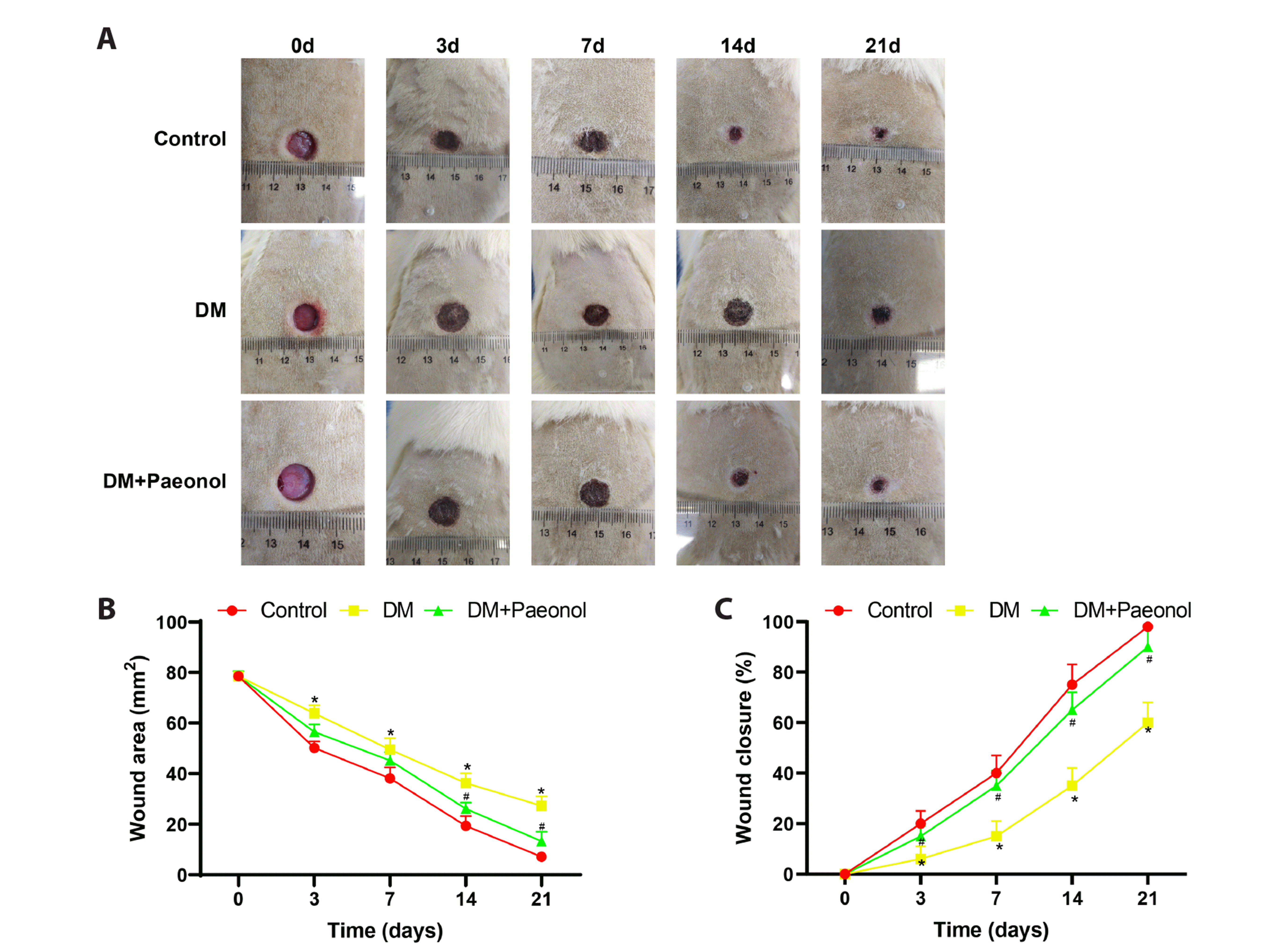
 XML Download
XML Download